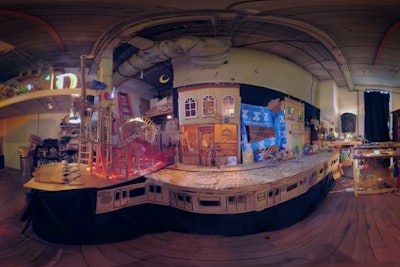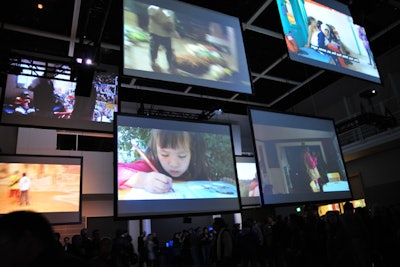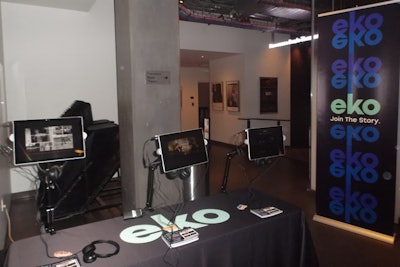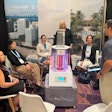Most major film festivals offer programming with multimedia or high technology, such as virtual reality and augmented reality. But the 54th annual New York Film Festival, presented by the Film Society of Lincoln Center, did what many similar events do not do: It made most of its high-tech programming free and open to the public.
The festival’s Convergence program, now its fifth year, spotlights visual presentations that have high-tech features. Matt Bolish, the film society's director of operations who programmed Convergence, said fewer than 10 visual projects were chosen from more than 100 candidates. The presentations were selected by a combination of reviewing submissions and soliciting projects from the interactive community—a process that Bolish says begins around January. The free programming was offered October 1 and 2 at Lincoln Center's Elinor Bunin Munroe Film Center, and Bolish estimated that as many as 1,500 people attended.
So why make this programming free? “You’re asking people to take big risk to sit down and watch any highly immersive piece,” Bolish said. “The whole purpose of the film festival is to help facilitate discovery of new things and what immersive programming is. And to do that, you need to expose it to a general audience. It can’t be people who have already bought a [festival] badge. And it can’t be the interactive community just showing off for itself. By making it free, we open it up to an audience who might not otherwise take the risk.”
The program also showcased what may be the next step in high-tech movie presentations: letting the users decide between several options that determine the scenes and conclusions of the film. Such is the case with Late Shift, an 80-minute thriller that had its U.S. premiere at the festival. In Late Shift, a parking attendant gets involved in a heist, and the audience chooses how to shape the story via an app that was provided at the October 2 premiere. After the screening, the Late Shift app and movie became available on iTunes.
Late Shift director and co-writer Tobias Weber said: “Film continues to be a more subtle medium when it comes to exploring humans and humanity … but until now, all this has been without participation. The audience in the cinema remains passive, does not take action, and is consequently never responsible for what happens on the screen. Late Shift will change this. The film will make the audience discharge their duties, will let the audience make a difference in the story’s unfolding. Neither the film nor the authors aim to judge the audience’s choices.”
Weber added: “The interactive format is extremely well-suited for confronting the audience with the consequences of their thoughts and actions, to move them and to invite them reflect about choices. That is the meaning of the project.”
Bolish said that for any event that offers high-tech features, it’s not enough just to provide the tech hardware, such as headsets or multiple screens. “You have to provide a space where people feel comfortable to play and get lost in the experience," he said.

In the 10-minute fictional film Giant, viewers got a 360-degree, virtual-reality view of a war-zone basement shelter that houses a father, mother, and their daughter.

Cardboard City, which incorporated virtual reality and augmented reality, is a three-minute film about a community of artists forced out of their studios in Brooklyn's Gowanus neighborhood due to increasing rent. The film was primarily set in the interior of an artist's studio.

Priya's Mirror, a comic book originating in India, was showcased with augmented reality to bring the 2-D world of the comic to life and unlock a number of interactive story elements. The installation had its world premiere at the New York Film Festival.

A large-scale video installation focused on 10 individuals who in their own ways are responsible for moving people and products throughout the world. Lives in Transit, which had its world premiere at the New York Film Festival, was on display at Walter Reade Theater's Furman Gallery.

Eko, from media and tech company Interlude, is a new video platform that responds to a viewer’s input to control the outcome of visual presentations.



















